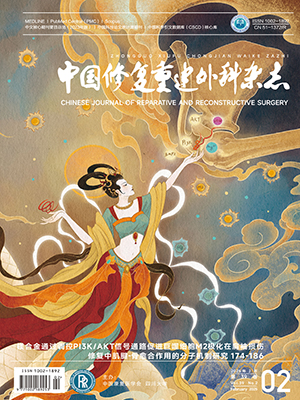| 1. |
刘粤, 郝玮, 张岩, 等. 多学科协作综合治疗老年髋部骨折的疗效. 中国老年学杂志, 2014, 34(19): 5481-5484.
|
| 2. |
王国旗, 龙安华, 张立海, 等. 老年髋部骨折合并糖尿病患者围手术期血糖水平对预后的影响. 中国修复重建外科杂志, 2014, 28(7): 844-847.
|
| 3. |
王艳, 吴新, 汤根芬. 家庭访视护理干预对老年髋部骨折术后病人生活质量的影响. 齐齐哈尔医学院学报, 2012, 33(13): 1803-1805.
|
| 4. |
方秀统, 张新, 王博, 等. 老年人髋部骨折术后死亡分析. 骨与关节损伤杂志, 2004, 19(7): 442-444.
|
| 5. |
陈佳, 李西成. 髋部骨折: 争议与挑战. 中华老年骨科与康复电子杂志, 2017, 3(4): 193-196.
|
| 6. |
贾学宽, 孙天胜. 血液指标对老年髋部骨折死亡率预测研究进展. 实用骨科杂志, 2015, 21(12): 1093-1095.
|
| 7. |
Grass C, Umansky R. Problems in promoting the growth of multi-disciplinary diagnostic and counseling clinics for mentally retarded children in nonmetropolitan areas. Am J Public Health, 1971, 61(4): 698-710.
|
| 8. |
Whitehouse M. A policy framework for commissioning cancer services. BMJ, 1995, 310(6992): 1425-1426.
|
| 9. |
Althausen PL, Shannon S, Owens B, et al. Impact of hospital-employed physician assistants on a level Ⅱ community-based orthopaedic trauma system. J Orthop Trauma, 2016, 30(Spuppl 5): S40-S44.
|
| 10. |
Soong C, Cram P, Chezar K, et al. Impact of an integrated hip fracture inpatient program on length of stay and costs. J Orthop Trauma, 2016, 30(12): 647-652.
|
| 11. |
Christmas AB, Reynolds J, Hodges S, et al. Physician extenders impact trauma systems. J Trauma, 2005, 58(5): 917-920.
|
| 12. |
Spisso J, O’Callaghan C, McKennan M, et al. Improved quality of care and reduction of housestaff workload using trauma nurse practitioners. J Trauma, 1990, 30(6): 660-663.
|
| 13. |
Jarrett LA, Emmett M. Utilizing trauma nurse practitioners to decrease length of stay. J Trauma Nurs, 2009, 16(2): 68-72.
|
| 14. |
Haan JM, Dutton RP, Willis M, et al. Discharge rounds in the 80-hour workweek: importance of the trauma nurse practitioner. J Trauma, 2007, 63(2): 339-343.
|
| 15. |
Friedman SM, Mendelson DA, Bingham KW, et al. Impact of a comanaged Geriatric Fracture Center on short-term hip fracture outcomes. Arch Intern Med, 2009, 169(18): 1712-1717.
|
| 16. |
Della Rocca GJ, Moylan KC, Crist BD, et al. Comanagement of geriatric patients with hip fractures: a retrospective, controlled, cohort study. Geriatr Orthop Surg Rehabil, 2013, 4(1): 10-15.
|
| 17. |
Prestmo A, Hagen G, Sletvold O, et al. Comprehensive geriatric care for patients with hip fractures: a prospective, randomised, controlled trial. Lancet, 2015, 385(9978): 1623-1633.
|
| 18. |
Nyberg SM, Keuter KR, Berg GM, et al. Acceptance of physician assistants and nurse practitioners in trauma centers. JAAPA, 2010, 23(1): 35-41.
|
| 19. |
徐江波, 袁宏, 赵喜滨, 等. 520 例老年骨科患者围手术期风险因素相关性分析. 新疆医科大学学报, 2008, 31(10): 1382-1384.
|
| 20. |
张静梅, 张立涛, 梁俊生. 老年骨科患者并存内科系统疾病调查分析. 中国骨质疏松杂志, 2012, 18(4): 336-338.
|
| 21. |
宋婷婷, 王新民, 毕希乐, 等. 老年髋部骨折围术期心力衰竭的危险因素分析. 中华老年骨科与康复电子杂志, 2018, 4(1): 23-28.
|
| 22. |
谢添, 马彬彬, 李荥娟, 等. 加速康复外科在老年髋部骨折的研究现状. 中国修复重建外科杂志, 2018, 32(8): 1038-1046.
|




